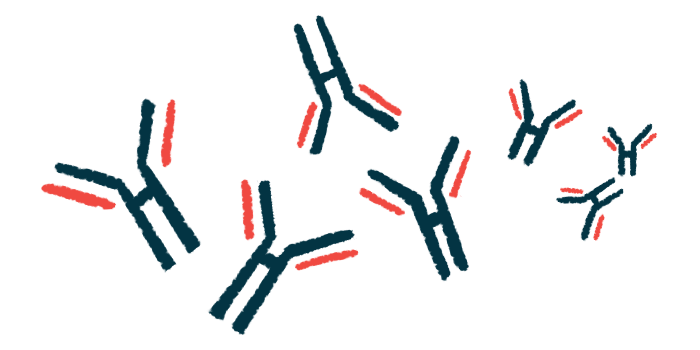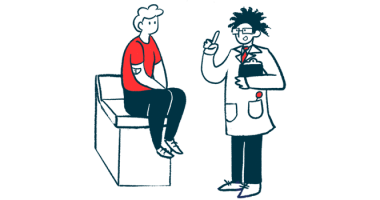Treatment found for 3 extremely rare cases of NMOSD and MOGAD
Fewer than 1% of patients found to have both rare autoimmune disorders

Testing positive for self-reactive antibodies causing both neuromyelitis optica spectrum disorder (NMOSD) and myelin oligodendrocyte glycoprotein antibody disease (MOGAD) — two related autoimmune disorders — is extremely rare, but it appears to manifest more as NMOSD, a study in India suggests.
So-called double positivity was found in three of nearly 2,000 people who had suspected NMOSD or MOGAD disease based on their symptoms — a rate lower than 1%.
“Exceptionally, NMO and MOG … do co-exist,” the researchers wrote in a study highlight, while also noting that the prevalence of MOGAD was “substantially higher” than that of NMOSD.
While none of the patients responded to steroid-based treatments, a blood-cleaning procedure called plasmapheresis, or plasma exchange, and off-label rituximab were shown to be effective.
The study, “The prevalence and clinical phenotype of dual seropositive neuromyelitis optica spectrum disorders at a national reference center in South Asia,” was published in the journal Multiple Sclerosis and Related Disorders.
Investigating the occurrence of 2 rare autoimmune disorders
NMOSD and MOGAD are two rare autoimmune disorders caused by an abnormal immune attack against the spinal cord and the optic nerves, which pass information from the eyes to the brain and back. Less often, they also affect the brain.
Because both conditions are mainly marked by inflammation of the spinal cord (myelitis) and the optic nerve (optic neuritis), they share symptoms such as loss or blurring of vision, muscle stiffness or weakness, and numbness or loss of sensation.
But unlike MOGAD, which occurs about equally in women and men, NMOSD is more common in women. People with MOGAD usually respond to steroids and recover well after an attack, whereas NMOSD patients also may require immunosuppressants to prevent a new attack from happening.
Still, the only way to accurately differentiate one disease from the other is by checking for the presence of specific disease-driving antibodies. In NMOSD, these typically target AQP4, a protein present in neuron-supporting cells. Meanwhile, in MOGAD, their target is myelin oligodendrocyte glycoprotein, or MOG, part of the myelin sheath that surrounds nerve fibers.
In very rare cases, according to a team of researchers in India, “[anti-AQP4 and anti-MOG] antibodies have been found to co-exist in certain patients.” However, the team noted, the effect of their simultaneous presence is “not well-documented.”
To determine how common this is and how it manifests, the researchers — all from the Amrita Institute of Medical Sciences — examined the medical records of nearly 2,000 individuals with suspected NMOSD and MOGAD. All were tested for both antibodies at a single Indian center between August 2018 and November 2021.
Specifically, the records covered 1,935 people, comprising 1,445 adults and 490 children. In all, 65 or 3.4% tested positive for anti-AQP4 antibodies. A higher number — 217 or 11.2% — tested positive for antibodies against MOG.
Compared with the MOG group, those with anti-AQP4 antibodies were older (mean 40.5 vs. 25.5 years) and more often female (87.7% vs. 56.2%).
A total of three patients, or 0.15%, tested positive for both antibodies.
Plasma exchange, rituximab may be effective in rare autoimmune disorders
One of these patients, a 42-year-old man, first experienced a condition known as area postrema syndrome (APS) — characterized by uncontrollable nausea, vomiting, and/or hiccups — that can occur early in the course of NMOSD.
At that time, he was negative for either antibody. Nearly six months later, his symptoms returned, and he also experienced numbness on the right side of the body. An MRI scan showed lesions in the spinal cord and the brain area associated with APS. Blood tests revealed his double positivity.
A second patient, a 27-year-old woman, initially experienced symptoms of optic neuritis in both eyes, with blurring vison that progressed to vision loss. About one month later, she had a relapse following a seizure and paralysis of the left side of the body. Blood work showed the presence of both antibody types.
Another woman, age 25, also showed progressive symptoms of optic neuritis in both eyes as her first symptom. MRI results showed optic nerve lesions and abnormal signs in the spinal cord. About one year later, she developed left-sided weakness, at which point she was found to be positive for both anti-AQP4 and anti-MOG antibodies.
Further investigation is vital in characterizing the incidence and underlying [disease mechanisms] of the presentation of this spectrum of diseases whilst trying to understand the best line of management for such cases.
Intravenous or into-the-vein methylprednisolone — a steroid — was given to two of the patients, and oral steroids to the other. None responded to these steroid-based treatments, but 2-4 subsequent cycles of plasmapheresis, known as plasma exchange, “produced an excellent response,” the researchers wrote. Plasma exchange, as its name suggests, is a procedure to remove harmful antibodies from the blood and replace them with healthy ones.
Two of the patients also received rituximab, an immunosuppressant sold under the brand name Rituxan, among others, that is used off-label in NMOSD to prevent relapses. Both individuals showed good responses.
At the last assessment, the first patient “had no new symptoms since his recovery and suffers no significant deficits,” the researchers wrote, adding that the third patient “has reported mild improvement in hand grip and walking.”
The second patient is still experiencing blurred vision and residual hand numbness that has prevented her to return to work, but had not relapsed for the past two years, without any medication.
These findings highlight that the presence of both anti-AQP4 and anti-MOG antibodies is “extremely rare,” the researchers wrote, and the three patients with double positivity “had a clinical presentation more similar to NMO disease than MOG disease.”
This means that anti-AQP4 antibodies may have “played an important role in determining the disease course,” the team wrote.
“Further investigation is vital in characterizing the incidence and underlying [disease mechanisms] of the presentation of this spectrum of diseases whilst trying to understand the best line of management for such cases,” they concluded.








